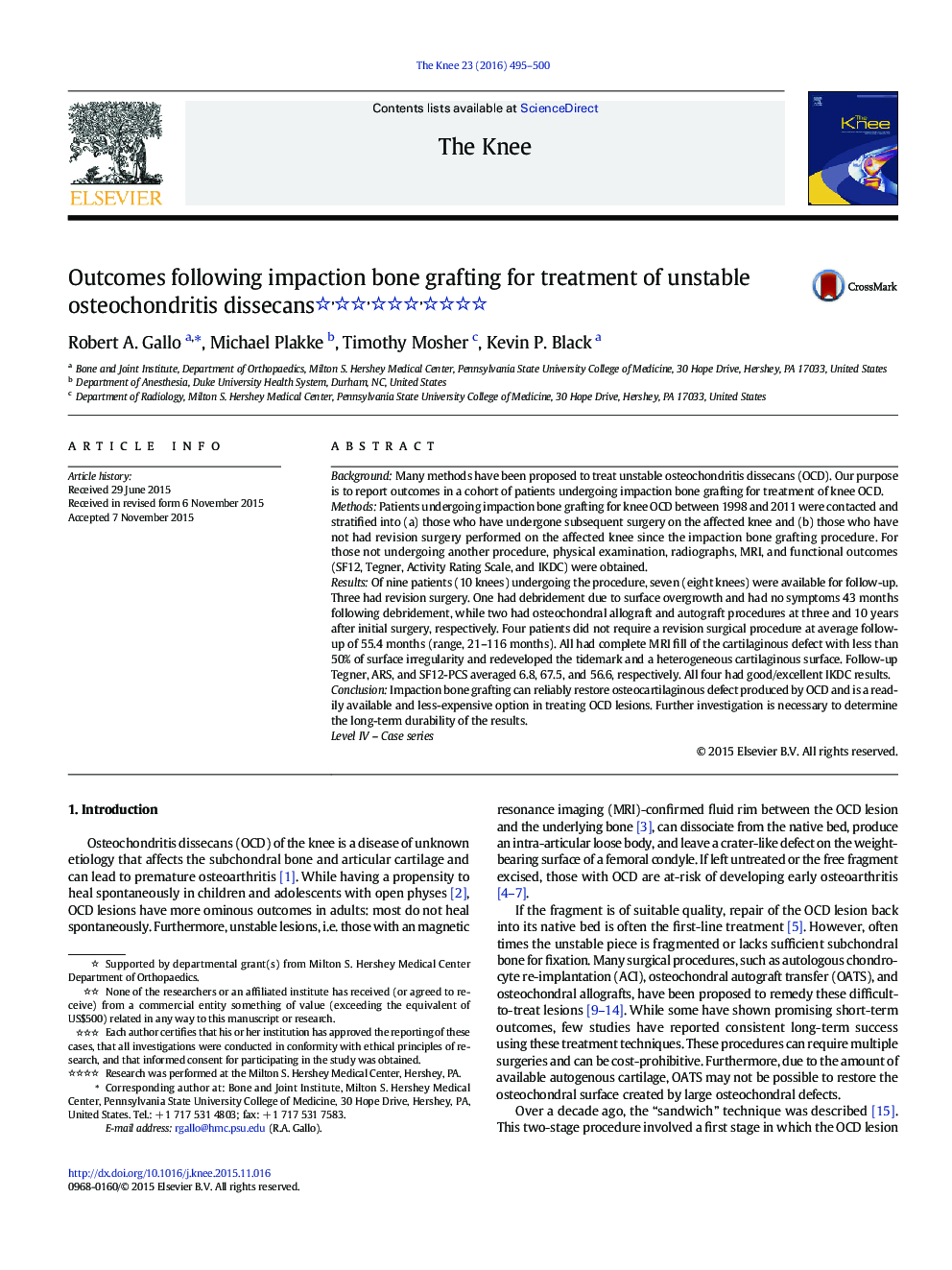| Article ID | Journal | Published Year | Pages | File Type |
|---|---|---|---|---|
| 6211148 | The Knee | 2016 | 6 Pages |
â¢We followed a cohort undergoing impaction bone grafting to fill defect for OCD.â¢MRI and functional outcomes demonstrated results similar to more expensive methods.â¢Failures in our cohort were due to overpacking defect and failure to correct alignment.
BackgroundMany methods have been proposed to treat unstable osteochondritis dissecans (OCD). Our purpose is to report outcomes in a cohort of patients undergoing impaction bone grafting for treatment of knee OCD.MethodsPatients undergoing impaction bone grafting for knee OCD between 1998 and 2011 were contacted and stratified into (a) those who have undergone subsequent surgery on the affected knee and (b) those who have not had revision surgery performed on the affected knee since the impaction bone grafting procedure. For those not undergoing another procedure, physical examination, radiographs, MRI, and functional outcomes (SF12, Tegner, Activity Rating Scale, and IKDC) were obtained.ResultsOf nine patients (10 knees) undergoing the procedure, seven (eight knees) were available for follow-up. Three had revision surgery. One had debridement due to surface overgrowth and had no symptoms 43Â months following debridement, while two had osteochondral allograft and autograft procedures at three and 10Â years after initial surgery, respectively. Four patients did not require a revision surgical procedure at average follow-up of 55.4Â months (range, 21-116Â months). All had complete MRI fill of the cartilaginous defect with less than 50% of surface irregularity and redeveloped the tidemark and a heterogeneous cartilaginous surface. Follow-up Tegner, ARS, and SF12-PCS averaged 6.8, 67.5, and 56.6, respectively. All four had good/excellent IKDC results.ConclusionImpaction bone grafting can reliably restore osteocartilaginous defect produced by OCD and is a readily available and less-expensive option in treating OCD lesions. Further investigation is necessary to determine the long-term durability of the results.Level IV - Case series
